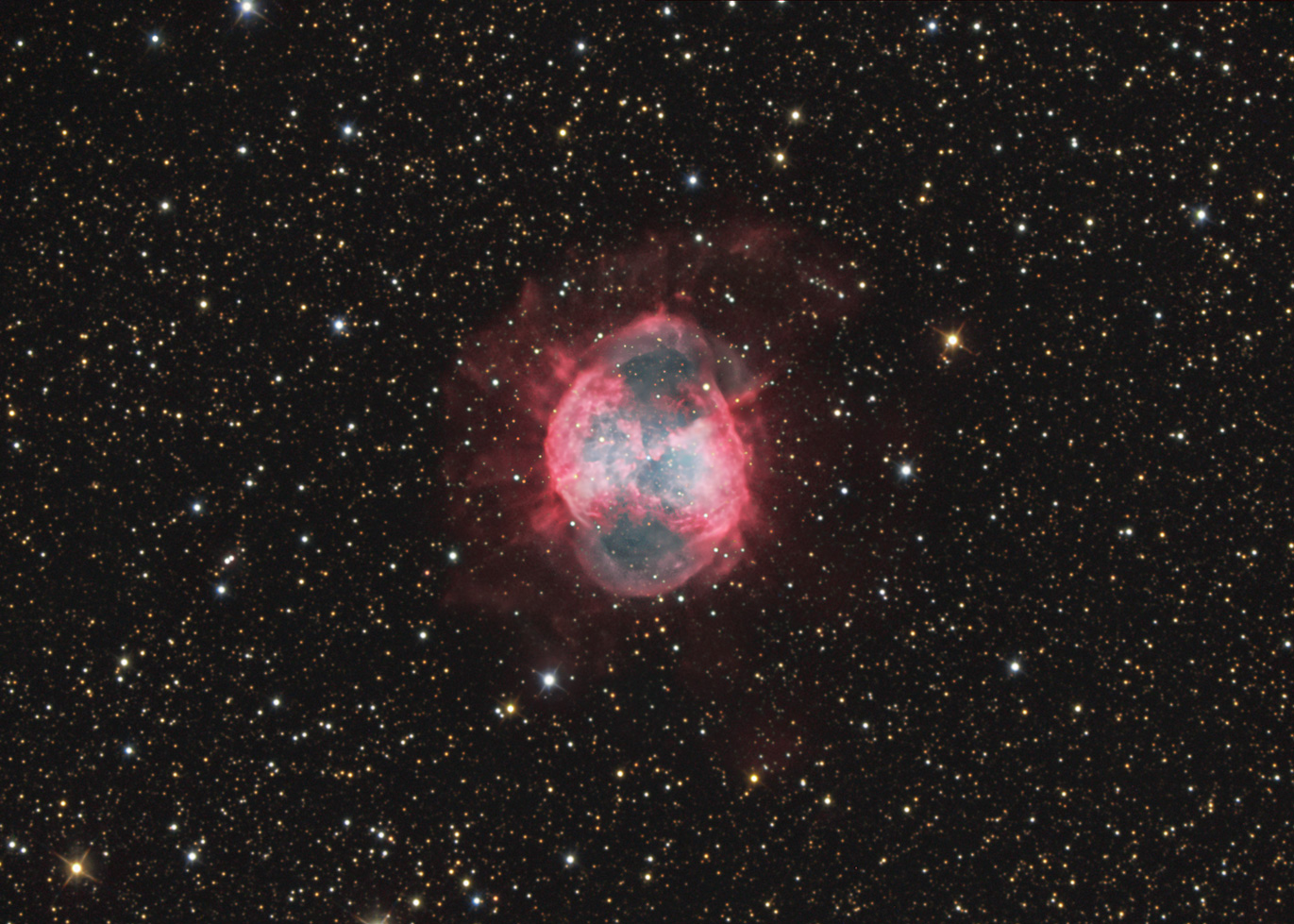M27 (Dumbbell Nebula)
Characteristics:
Magnitude: about 7.3
Size: about 8'
Distance: 1,250 light years
RA (J2000): 19h 59m 36s
Dec (J2000): 22 degrees 43' 18"
Position Angle (Pinpoint): plus
58 degrees
Description:
Messier
27,
also known as the Dumbbell Nebula, was the 27th object categorized by
Messier during his search for objects that could be confused for
comets.
M27 is a planetary nebula, which represents the end stage of stars
about the
same size as our Sun (in contrast, stars much larger than our Sun
typically undergo a supernova explosion). Such stars experience
a phase of continued helium burning on their surface, long after the
fuel in their core has been exhausted. The outer layer is shed
into space, igniting surrounding elements such as hydrogen through
excitation by the solar wind and heat. The
term "planetary" nebula is a misnomer and was coined by Herschel, based
upon its superficial visual resemblance to his recently discovered
planet, Uranus. More information about M27 may be found here and here.
Photographic Details:
Date: July 4 (Ha), July 12 (OIII), and July 14 (RGB), 2009.
Scope: VC200L at
f6.4 on the Takahashi NJP Mount.
Autoguider: SBIG ST-402 with
60mm guidescope, focal length 227mm
Camera: Apogee U32
Filter: Astronomik
Ha (6 nm), OIII (13 nm), type II RGB filters.
Exposures:
Ha (10 x 20'); OIII (9 x 20'); R (5 x 10'); G (5 x 10'); B (5 x 15'). Total
exposure time 9.25 hours.
Conditions: Temperature 60 degrees F.
Post-processing: Calibrated, aligned, and
Sigma Clip combined
in Maxim, deconvolution in Maxim using Bob
Vanderbei's Fat Tail Deconvolution script (3 iterations), followed
by DDP
in ImagesPlus (IP). Further processing in Photoshop CS4 (16
bit format).
Ha was blended into R channel, and OIII was blended into G and B
channels. Ha was also used as luminance.
Please
note: Graphics on this website
may not be reproduced without author permission.
Back to Nebulae
Home

